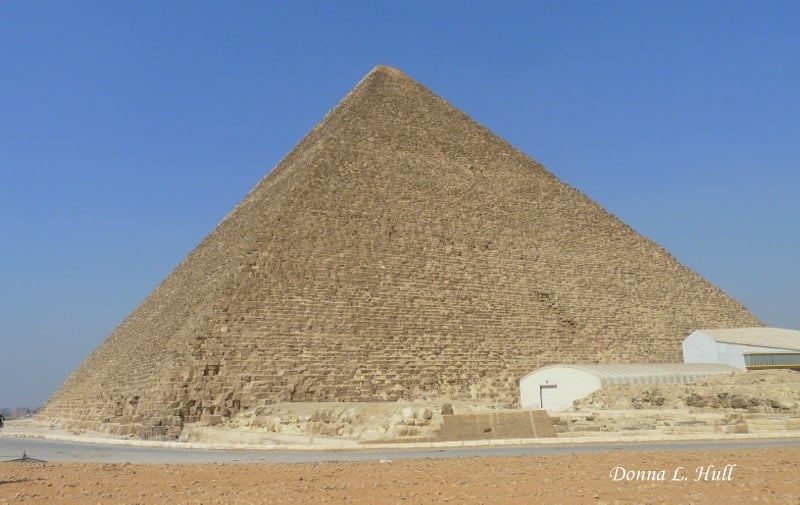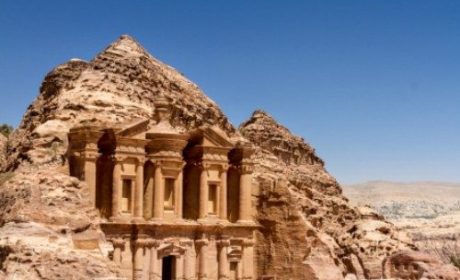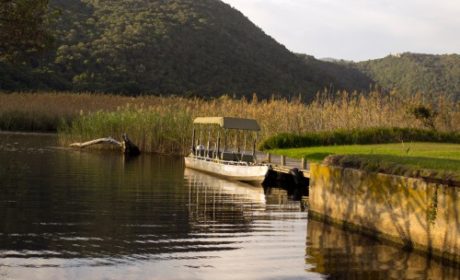A luxury Nile River Cruise has long been on our bucket list here at My Itchy Travel Feet. I imagine gliding along the Nile on a Dahabiya, stopping to explore temples that become more and more grand. For me, it would be a travel dream come true.
Featured writer, Debi Lander, ByLanderSea, shares her experience on a Dahabiya Nile Cruise. Yes, what sounds like a dream of a trip can actually come true.
Ancient Egypt’s pyramids, mummies, tombs, and temples have long mystified the public, gaining heightened interest after the discovery of King Tutankhamen’s intact tomb in 1922. When Lord Carnarvon, financier of the archeological dig, died shortly after its opening, rumors arose of the tomb carrying a curse.
My captivation with Egypt dates back to my elementary school days. Of course, I wondered how the pyramids were built and had a ghoulish fascination with mummies, but a story in My Weekly Reader about the building of the Aswan Dam sustained my interest.
A project was underway to save a temple from the rising water in new Lake Nassar, the world’s largest man-made lake. The shrine would be cautiously cut apart and moved to higher ground. I promised myself, “Someday I’ll go to Egypt and see those treasures.”
That someday took about 60 years, but finally happened. I signed on for a tour of the country starting in Cairo.
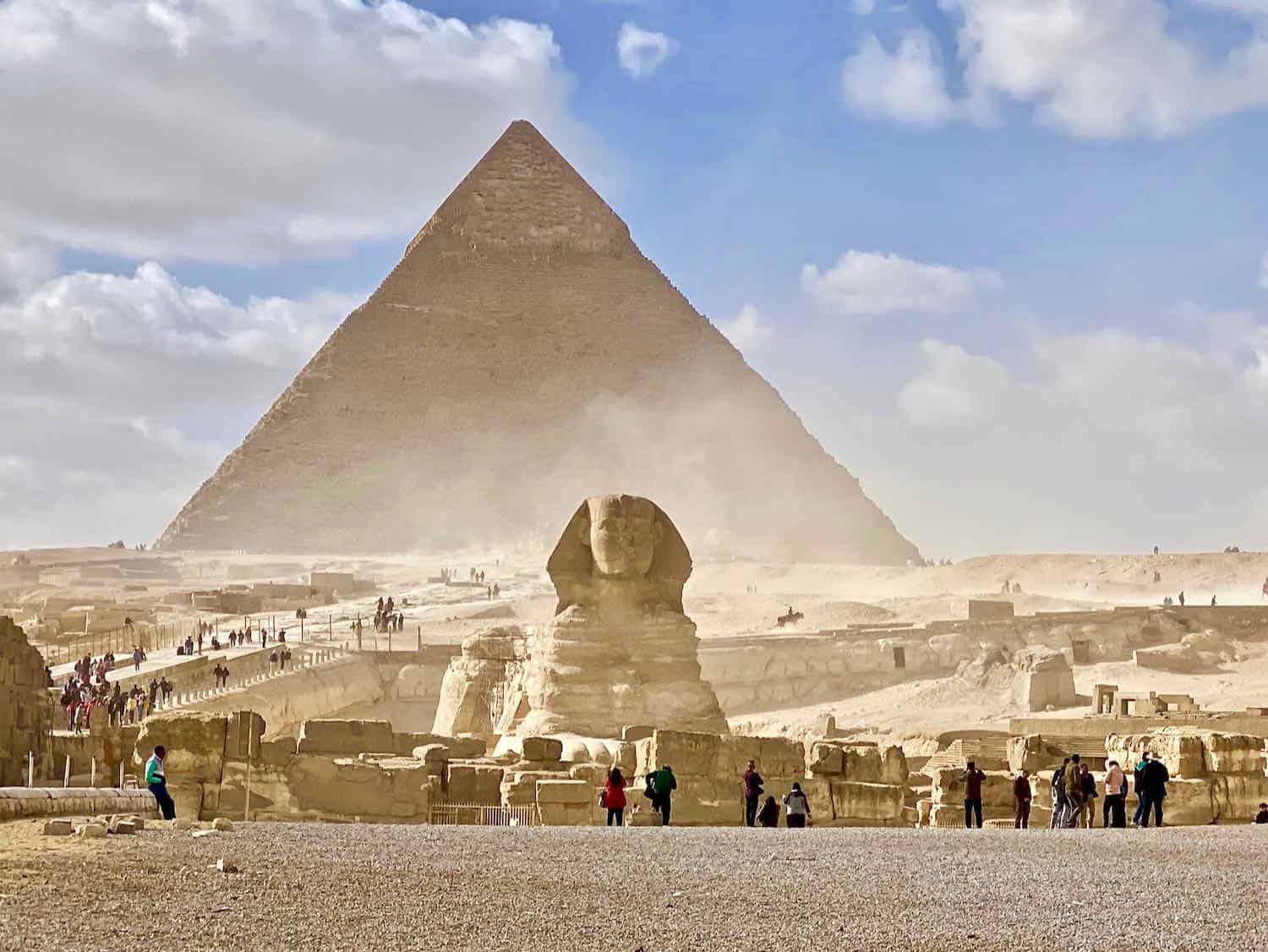
Like all first time visitors, I wanted to gaze upon the 4,500-year-old pyramids of Giza, the Sphinx, and the treasures in the National Archeological Museum. They’ve stood the test of time and demonstrate the astonishing skills of the ancient craftsmen.
My itinerary included more than Giza’s wonders, I would join a Dahabiya Nile Cruise to see the sacred temples and the Pharaohs tombs in the Valley of the Kings, followed by a camel trek in the rocky South Sinai region.
Table of Contents
Cruising on a Dahabiya Nile Cruise: what to expect
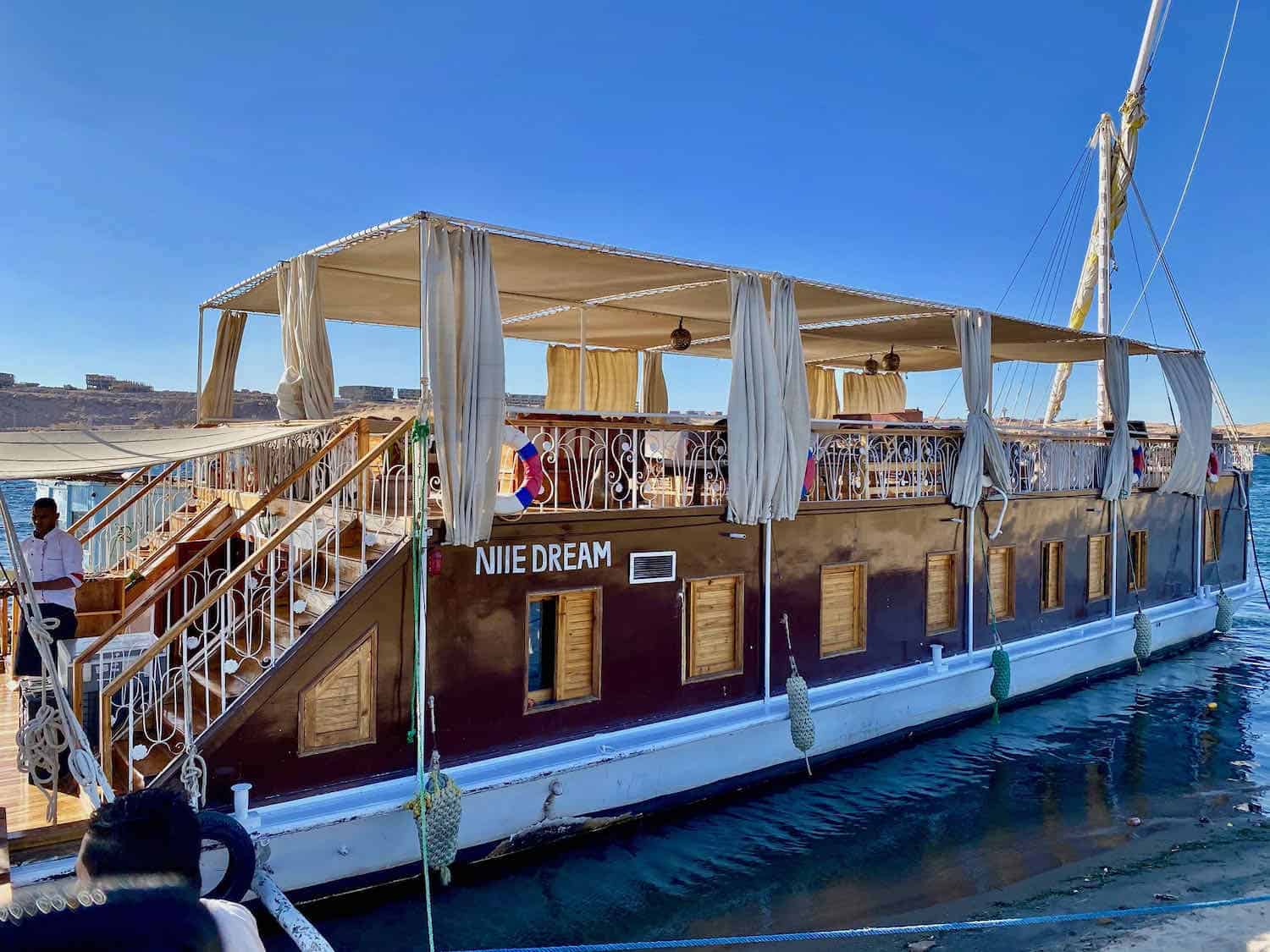
Nile cruises typically start in Aswan and end in Luxor or vice versa. I flew from Cairo to Aswan (research flights here) and recommend that route. The first temples will lack color but gradually intensify to vibrant hues in the Valley of the Kings, rather than the other way around.
My tour group of seven persons cruised on a small sailboat called a dahabiya, appropriately named the Nile Dream. Though the boat has sails, it was pulled by a tether off a tugboat.
This method ensures that travelers on smaller boats, like dahabiyas or feluccas – traditional fishing boats, keep to the scheduled itinerary. Larger cruise ships holding on average 100 persons are the most popular, but I am happy I experienced a small private boat.
As expected, my cabin or stateroom felt tight with two single beds and a compact, but adequate bathroom. The ship offered eight cabins on the main deck plus the kitchen.

The dining area and relaxing lounge filled the open-air upper deck along with the off-limits area for steering. The boat was extremely comfortable, the Nile waters calm, and the staff gracious and helpful.

Meals featured bountiful Mediterranean cuisine made from fresh ingredients. My group ate together at a large table on the upper deck, boat flaps lowered at night when the temperature dropped. Coffee and tea were always available upon request, even for early risers.
Lunch and dinner started with soup and a generous spread of appetizers like baba ghanoush, tzatziki, vegetable trays, bread and salad. We were offered two choices for the main course and always dessert and tea. Most Egyptians don’t drink alcohol, but we purchased wine in Aswan and held for happy hour.
Boomer Travel Tip
In today’s travel climate, trip insurance is a must. Compare policies and rates at InsureMyTrip.
Enjoying a Nile River Cruise itinerary
As in ancient times, the Nile River remains the lifeline in Egypt, with plenty of boat traffic near the major ports. The temple sites arose along the shores, so they are best seen and certainly most enjoyed from a cruise.
My group arrived at the Aswan airport, met our guide and drove off for a closer look at the High Aswan Dam. The guide explained its need and importance: to prevent annual floods and to provide much needed hydroelectric power. We stopped at the dam’s 2.5 mile-long wall and at the monument erected to thank the Soviet government for helping finance the project.
Start at the Philae Temple
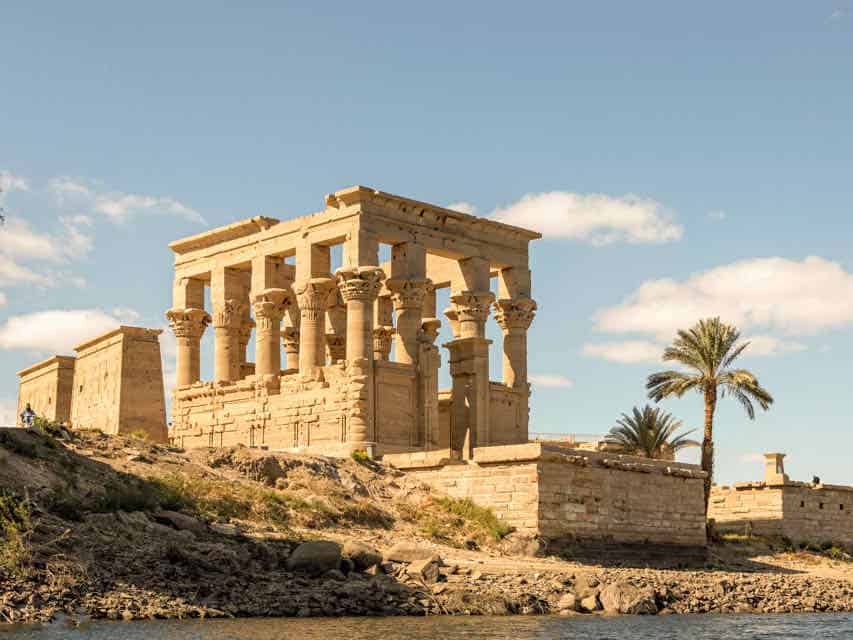
The Philae Temple came next, a structure now resting on an island reached by a short boat ride. The temple was built in the first century B.C. to honor Isis, goddess of beauty and love, the wife of Osiris, god of heaven and the lord of the underground world.
The stately colonnade, lined with intricately carved columns feature female faces. Large etched drawings of gods cover the exterior entrance, and smaller drawings appear on the interior of the sanctuary. The little island feels peaceful, perhaps due to the presence of Isis.
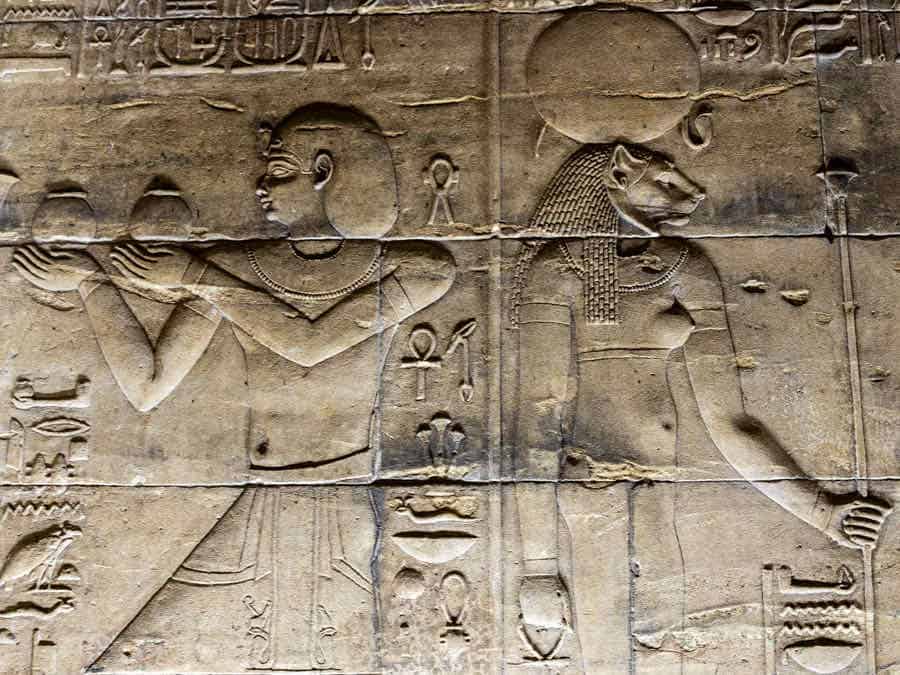
Philae gave me my first look at ancient hieroglyphics and an introduction to some of the many gods and goddesses. They can be confusing but my knowledge increased each day.
The Philae Temple was one that became partially submerged by the dam’s construction, causing the painted areas of the artwork to fade. Fortunately, it was rescued before suffering major damage. If you weren’t told, you would never know the buildings had been moved and reconstructed.
Onward to Abu Simbel
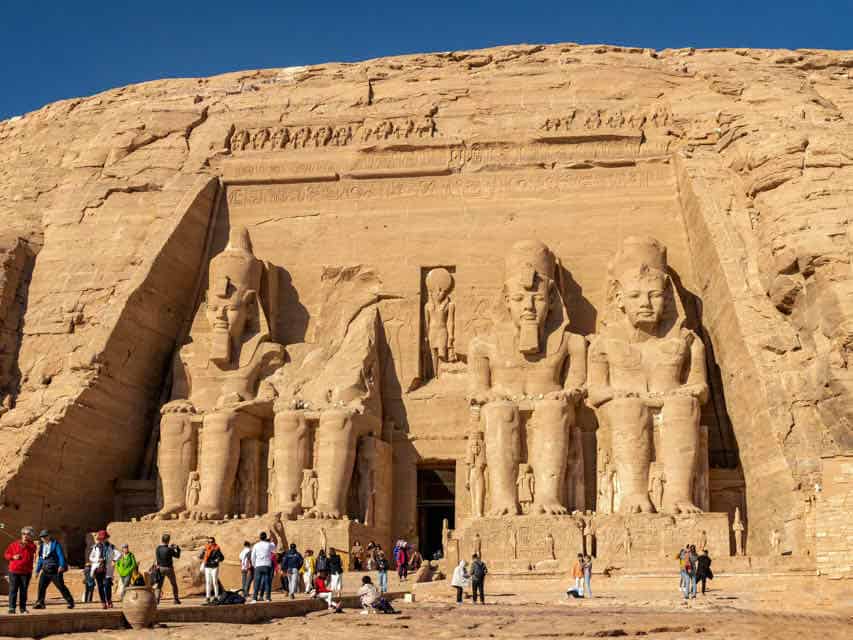
We all went to bed early to make a pre-dawn, three-hour drive to Abu Simbel, the temple I ‘d read about as a child. Back in the early 1960s, 51 nations agreed to help save Abu Simbel at the cost of $50 million. That sounds low, but if revalued, the figure would run about $450 million today.
Abu Simbel was built by and for Ramses II, known as Ramses the Great who ruled for 67 years, in the 13th-century B.C. You can’t help feeling small next to the four gigantic statues, all of them Ramses, seated at the temple entrance.
Each one is approximately 65-feet high, essentially forcing his power and ego upon you. (FYI: Ramses II took many wives and was the father of about 111 sons and 51 daughters.)
When I entered the doorway between the middle two statues, I stood spellbound. I gazed upon the Great Hall, not surprisingly, lined with more statues each about 30-feet tall, and a maze of beautifully carved rooms with scenes etched into the walls. The artwork depicts major events in Ramses the Great’s lifetime or afterlife possibilities.
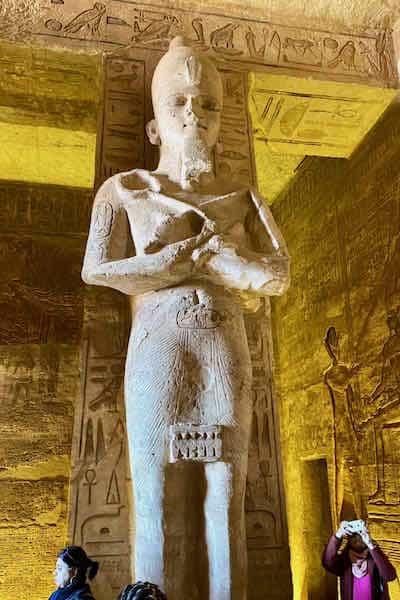
The inner-most chamber contains four seated statues, aligned so the sun shines directly on them twice a year. However, even during my visit, I captured the morning sunlight glowing off the heads of the figures.
A second, smaller temple dedicated to Nefertari, Ramses’ favorite wife, stands nearby. The temple is flanked by 38-foot tall statues of both the king and queen. The interior is similar in style just not as grand.
The site also includes a small museum with photographs and videos about the miraculous engineering project. The temple was carefully marked and supported, then cut apart.
Once a giant cliff was fashioned to hold and simulate the original terrain, the pieces were reassembled. The astonishing result overwhelms.
On the three-hour return ride, visitors took a nap and grasped the complete barrenness of the vast Libyan Desert, miles and miles of flat brownish sand, or bare nothingness. Even though the shrine sits in the middle of nowhere, don’t miss Abu Simbel.
Boomer Travel Tip
MedjetAssist Members who are hospitalized 150 miles from home receive medical transport to a home-country hospital of choice. Memberships from $99.
Cruise to Kom Ombo
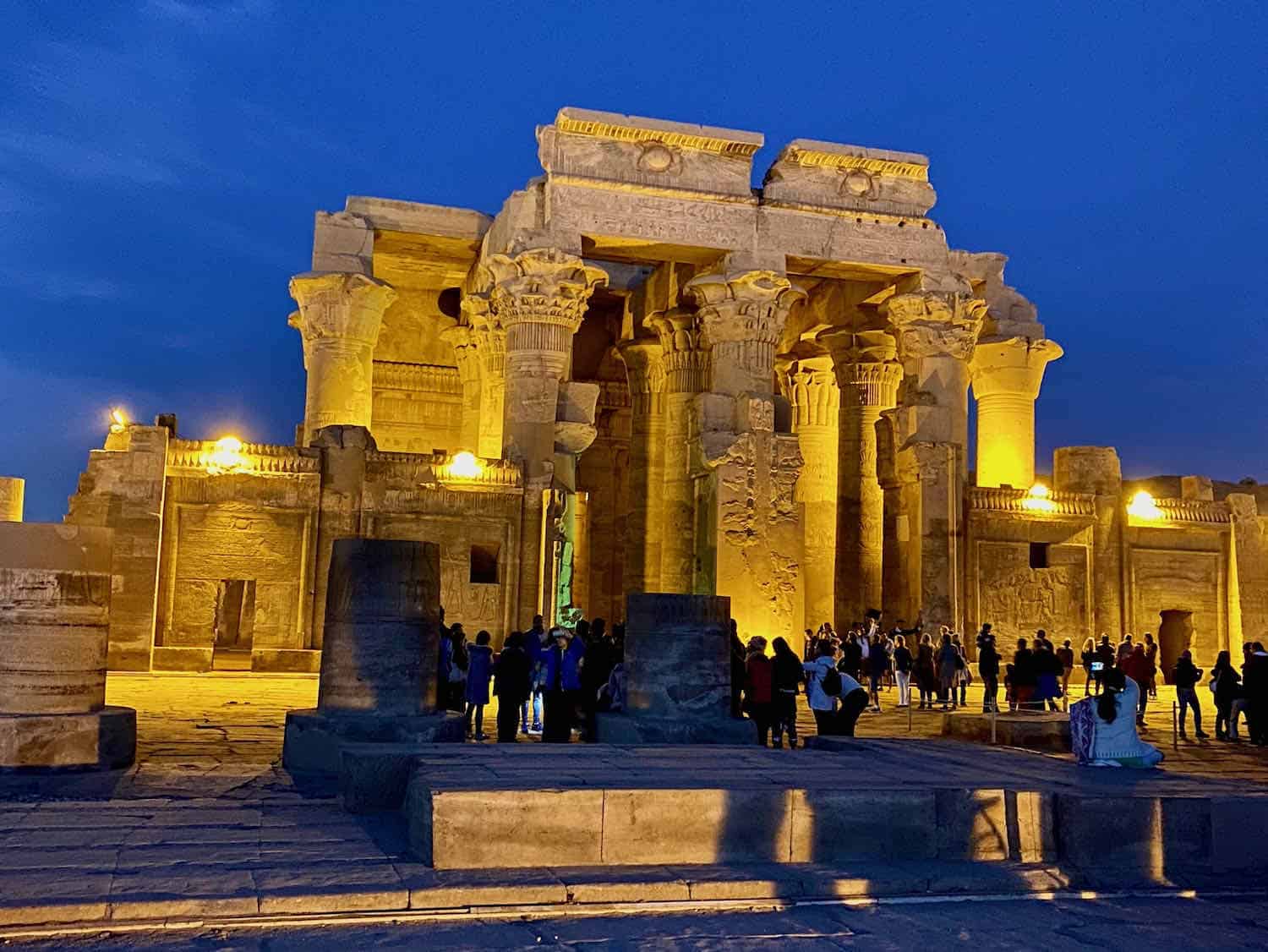
Finally, the joy of relaxing and floating down the Nile began. The thrill, to me, was seeing the greenery of sugar cane, palm trees and bushes flourishing alongside the edge of the river, just as I had imagined them. At times, colorful little villages, school children, fishermen and women carrying baskets appeared off-shore.
At sunset, we docked and explored Kom Ombo, a temple dedicated to the Egyptian gods Horas and Sobek, the crocodile god. Being a Floridian, I know alligators, so found the crocodile figures familiar. The Egyptians thought if they transformed the reptiles into religious gods, the animals wouldn’t attack.
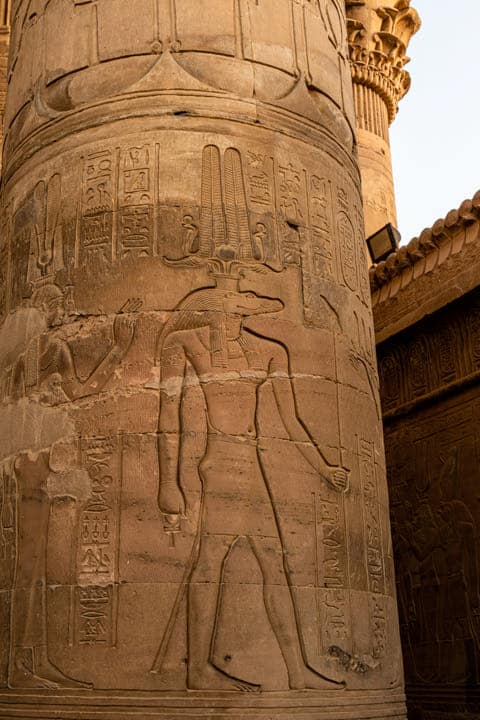
Afterward, I stopped in the adjoining museum to see mummified crocodiles dating from the first century B.C. Egyptians mummified many creatures along with their owners. I walked back to the Nile Dream as darkness fell, admiring Kom Obo in radiant nighttime illumination.
Admire Edfu temple

In the morning we docked at the small village of Esna and took a horse and carriage ride to Edfu Temple. Edfu was covered in silt and sand for almost 2,000 years and is, therefore, the best preserved, although it’s newer with a finish date of 57 B.C. In 1789, a French expedition discovered the upper parts of the building, but work to free it from the sands didn’t begin until 1860.
Upon entering the complex, you see two statues guarding the main temple entrance. One granite falcon god, Horus, stands in mint condition, the opposite only slightly chipped. The structure’s massive strength can be felt especially when you look at the height and depth of the walls.
Explore Valley of the Kings
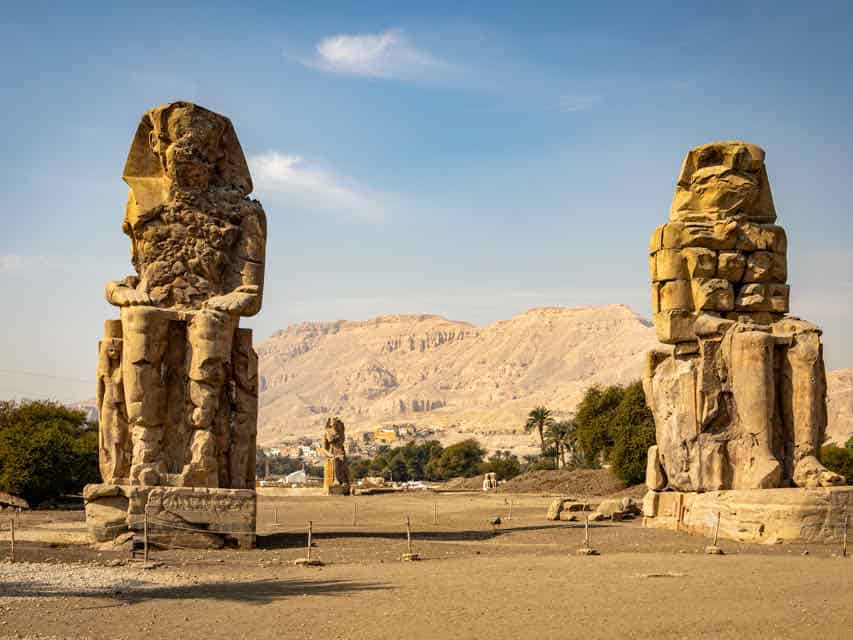
I was beyond excited when it was time to visit the Valley of the Kings, burial ground for Ancient Egyptian royalty between the 16th and 11th century BC. The towering arid, rocky mountains easily disguise the hidden tombs. Even in January, the air felt hot among these scorched limestone cliffs.
After a short tram ride, we entered the tomb of Ramses IV. I never imagined the corridors would be so wide and long, no claustrophobic anxiety here.
Beautifully painted hieroglyphics and scenes telling stories of gods and other characters covered the walls and ceilings. Incredibly, they are still in near perfect condition, my eyes didn’t know where to focus with the sensory overload.

My heartbeat escalated as we neared King Tut’s tomb. I tried to imagine the exhilaration archeologist Howard Carter must have experienced upon his monumental discovery.
The chambers, crammed to the ceiling, contained an immense wealth of treasures for the pharaoh to use in the afterlife. It took years to properly catalog and remove them from the tomb. (Some are on display in the Cairo museum and will now be moved to the GEM- Grand Egyptian Museum.)
While Tutankhamen’s tomb is the smallest in the valley, the incredible discovery greatly increased the collective knowledge of the ancient world. I stood in awe of the boy king and the timeless beauty in this space.
Slowly, I passed vibrantly painted frescoes that looked like they were painted yesterday. The guard permitted us to take cell phone photos, ones I now cherish.
Tut’s empty marble sarcophagus remains in the burial chamber and his mummy lies in one of the antechambers. The short time I spent in his tomb are moments I will never forget, and yes, worth a trip to Egypt.
We also toured Ramses IX’s tomb bursting with even more saturated color on the walls and symbols. My guide explained many of the pictorials, but it takes deep study to understand and recall.
Nonetheless, I soaked in the magic as I stepped back to ancient times imaging priests assembling deep below the earth. I envisioned a funeral procession carrying treasures for the pharaohs and the smell of incense filling the air. What a sight it must have been.
Spend a day at Thebes
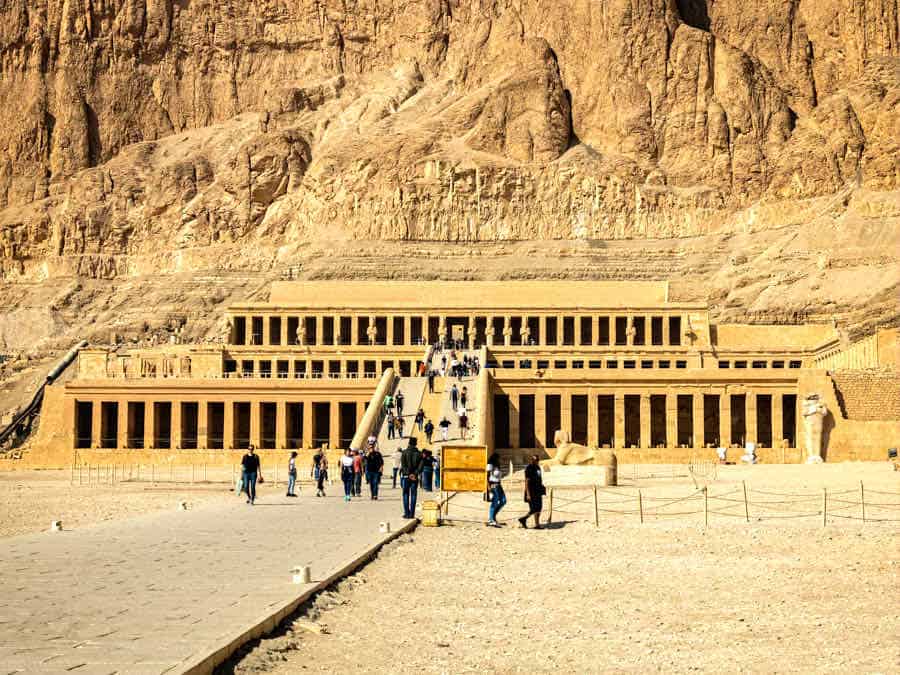
We moved on to Queen Hatshepsut’s temple, a structure very different and almost modern looking with Romanesque columns. I was intrigued by her story and, as travel often inspires, want to learn more about the famous queen.
We also toured an intricate tomb in the Valley of the Queens belonging to a son Ramses III. We did not visit Queen Nefertari’s tomb, considered the most beautiful.
Tip: Her tomb requires reservations, entrance fees around $90, and a time-limited visit. But, if I am ever lucky enough to return to Thebes, I’ll not miss it.
We finished the day at the Colossi of Memnon, two imposing but decaying statues standing in an open field about 40 feet tall. I felt exhausted but exhilarated; my lifelong dreams fulfilled.
End at Luxor and the Temple of Karnak
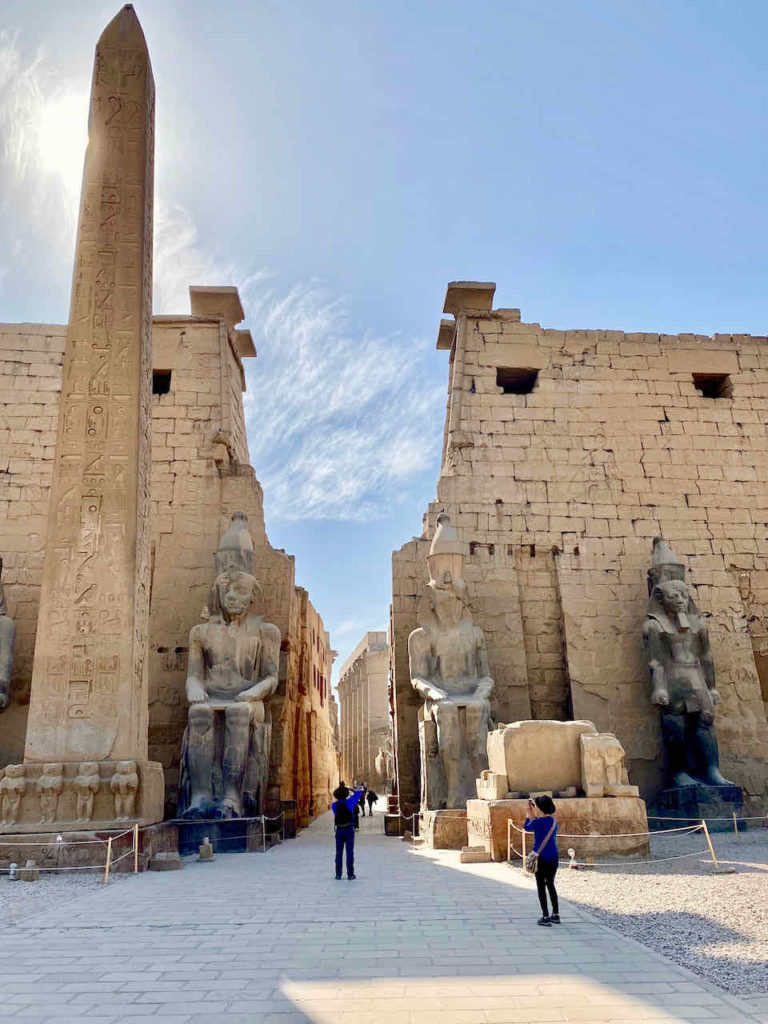
The boat staff beat rhythms on drums, sang and danced for us on our last night. The following morning, we left to explore Luxor previously called Thebes.
Luxor became the religious capital of Egypt during the height of the Pharaonic period. The temple complexes were begun around 1390 B.C. and later pharaohs ordered mega-additions.
The Temple of Karnak covers over 200 acres and contains the important temple of Amun, king of the gods. The site overwhelms visitors with endless courtyards, halls, colonnades and a sacred lake.
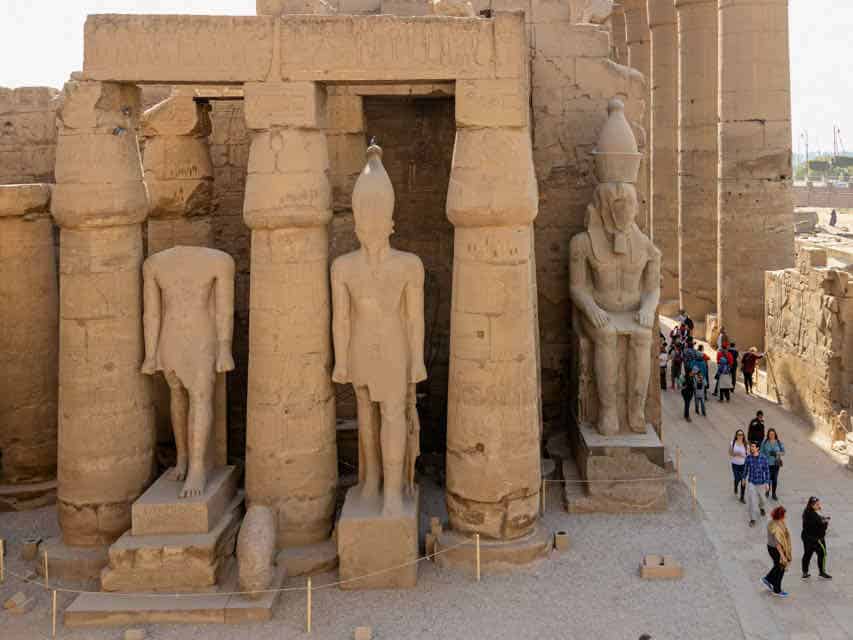
At one time 800,000 men worked in the temple as laborers, guards, priests, and servants. The temple was buried under sand for more than 1,000 years before excavation work began in the mid 19th century. It continues today.
The avenue of the sphinxes links the temple of Luxor with the Karnak Temple and was one of my favorite sites. Many of the 1,350 human-headed sphinxes with the bodies of lions that once lined the avenue have been restored. On the annual Opet festival, priests paraded from Karnak to Luxor Temple bearing the statues of the deities: Amun-Re, his wife Mut and their son Khonsu.
At Karnak, I also loved the row of criosphinxes, sphinxes with ram’s heads instead of the traditional human head.
Luxor Temple, too, astounds with huge statues near the entrance. It also features colonnades, courtyards and a garden.
I was beginning to get temple overload when we moved to the nearby mosque with a terrific spot to overlook the complex. I tried to hold that memory in my brain.
It was time to take to the skies again, but I think my head was already in the clouds. Egypt is home to one-third of the world’s antiquities and travels there has always been an exotic adventure. My Nile cruise was certainly a once in a lifetime experience and a must for any world traveler.
Soon, the new GEM (Grand Egyptian Museum) will open – currently set for the end of 2020. This fabulous building will showcase never before seen priceless relics and alone is reason enough to plan a trip. After the revolution in 2011, tourism fell dramatically but continues to rise and the GEM will surely increase the numbers.
My journey to Egypt was entirely self-financed. I arrived in Cairo as a solo female traveler and later met up with others for a private small group tour. I felt safe during the early 2020 trip. Please contact me for additional details at: [email protected].

